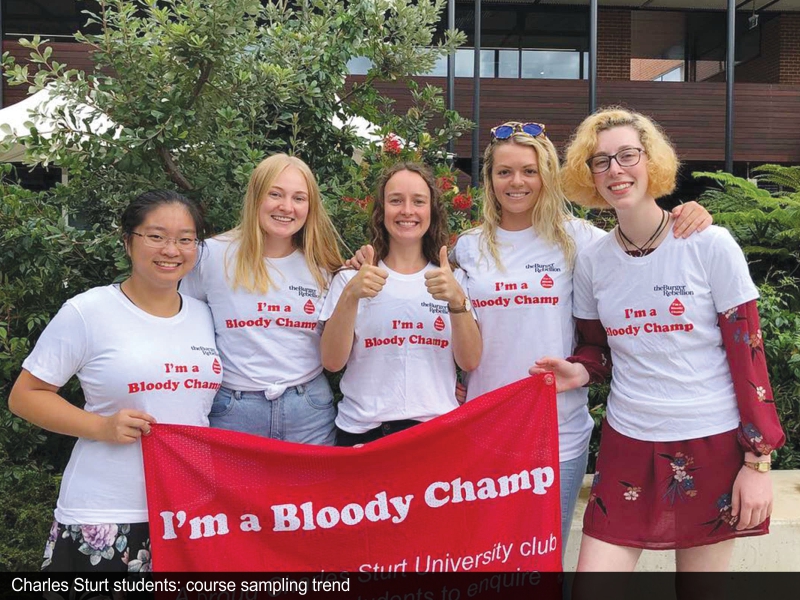
Australian universities’ new recruits are taking advantage of online education by ‘sampling’ degrees before committing to them, in a trend that complicates planning and pressures universities to deliver good experiences from the outset.
Charles Sturt University’s acting vice chancellor, John Germov, says incoming students are becoming “a bit more savvy” by trying out multiple courses before the “census date cut-off” when tuition fee debts start accruing.
Prof. Germov says that the Covid-induced shift to online education was “tailor-made” for this practice that has emerged in recent years but accelerated during the pandemic, with students now able to sample courses interstate as well as in nearby campuses. “We’re starting to see an increase in that sort of mobility (where) students accept an offer but don’t necessarily commit to it until they’ve dipped their toe in the water,” he says. “(They let) their initial experiences sway them one way or the other. It’s an interesting change of behaviour.”
According to Germov, students deserve credit for their selectivity. “You don’t want people committing to something that they’re not happy with, and you don’t want high rates of attrition. So we’re just going to have to find better ways to give people an inkling of the experience they’re likely to have,” he adds.
Limited available data on applications for undergraduate study this year reflect modest increases spurred by recession-fuelled demand for tertiary education. Sydney’s Universities Admissions Centre recorded roughly 77,000 applicants for 2021 courses by December — 7 percent more than the previous December — with people applying for up to five courses each.
By mid-January, the Victorian Tertiary Admissions Centre had fielded 3 percent more applications for university undergraduate courses than at the same point last year. Germov says such figures understate the true situation, because most universities accept enrolments directly from students as well as through admissions centres.
In total, Charles Sturt has attracted about 20 percent more applications than for last year’s cycle. “It’s a positive thing that applications are up, but it’s not a guarantee that you’re going to get some sort of students bonanza,” says Germov.
Outgoing Australian Catholic University vice chancellor Greg Craven reports a “massive increase in applications”, with increases of 20 percent not uncommon across universities and demand for some degrees doubling. “A course that ordinarily has 100 applications (may) have 200 applications… from students (with) applications to five other institutions,” he says. “It looks like three-dimensional chess. When we look at our applications, the question we’re asking at the back of our minds is, who else have you applied to?”
Former University of Adelaide vice chancellor Warren Bebbington says that the issue is bedevilling admissions staff as they juggle course offerings for the new academic year. A difficult task at the best of times, it is further complicated this year by federal funding changes, increased domestic demand and complete uncertainty around international enrolments.
Prof. Bebbington says some faculty budgets normally finalised in December aren’t expected to be confirmed until late February. “I’m pleased that I’m not involved. It’s a great year to be a retired vice chancellor,” he adds.
(Excerpted and adapted from Times Higher Education and The Economist)
Also read: Europe: Schools closure pains